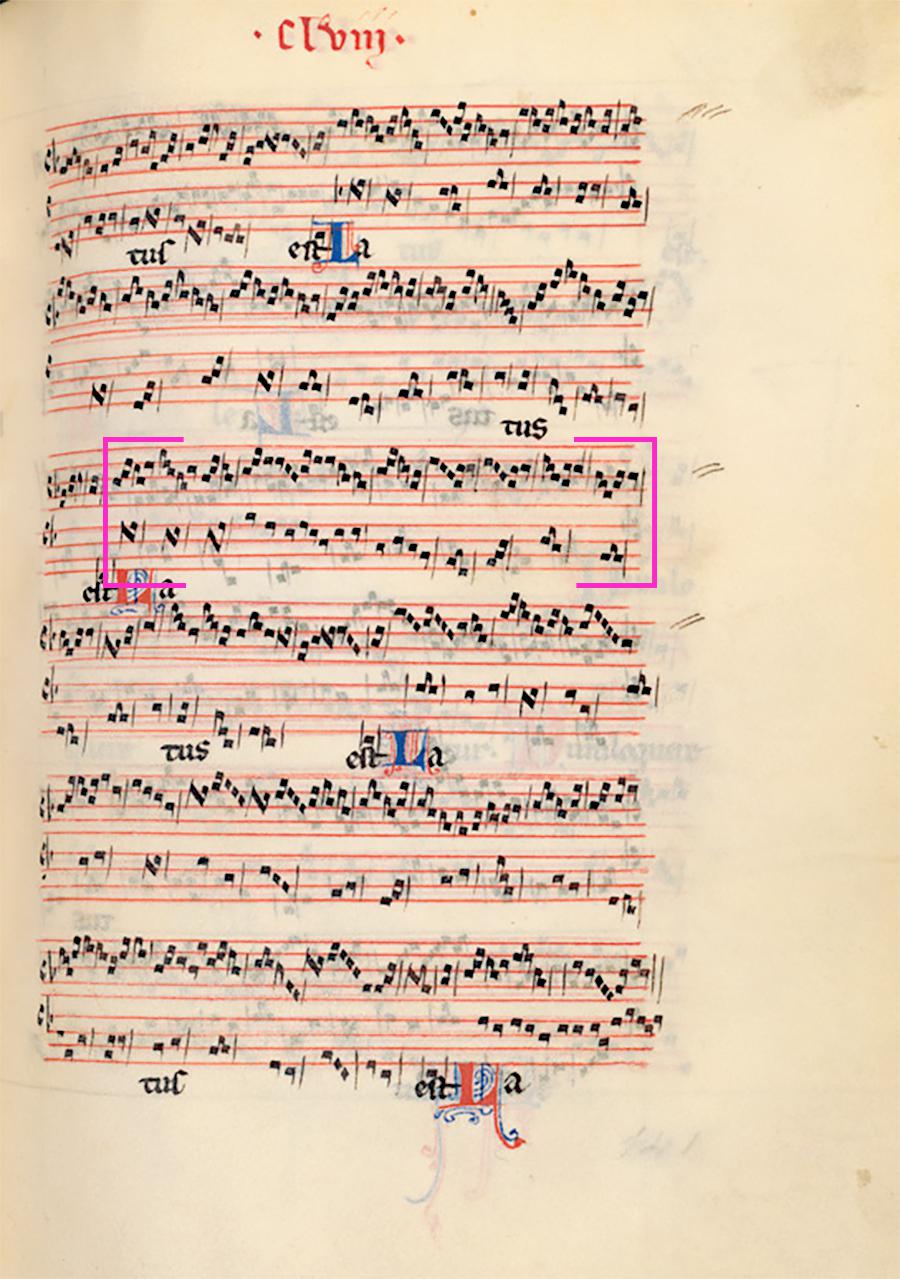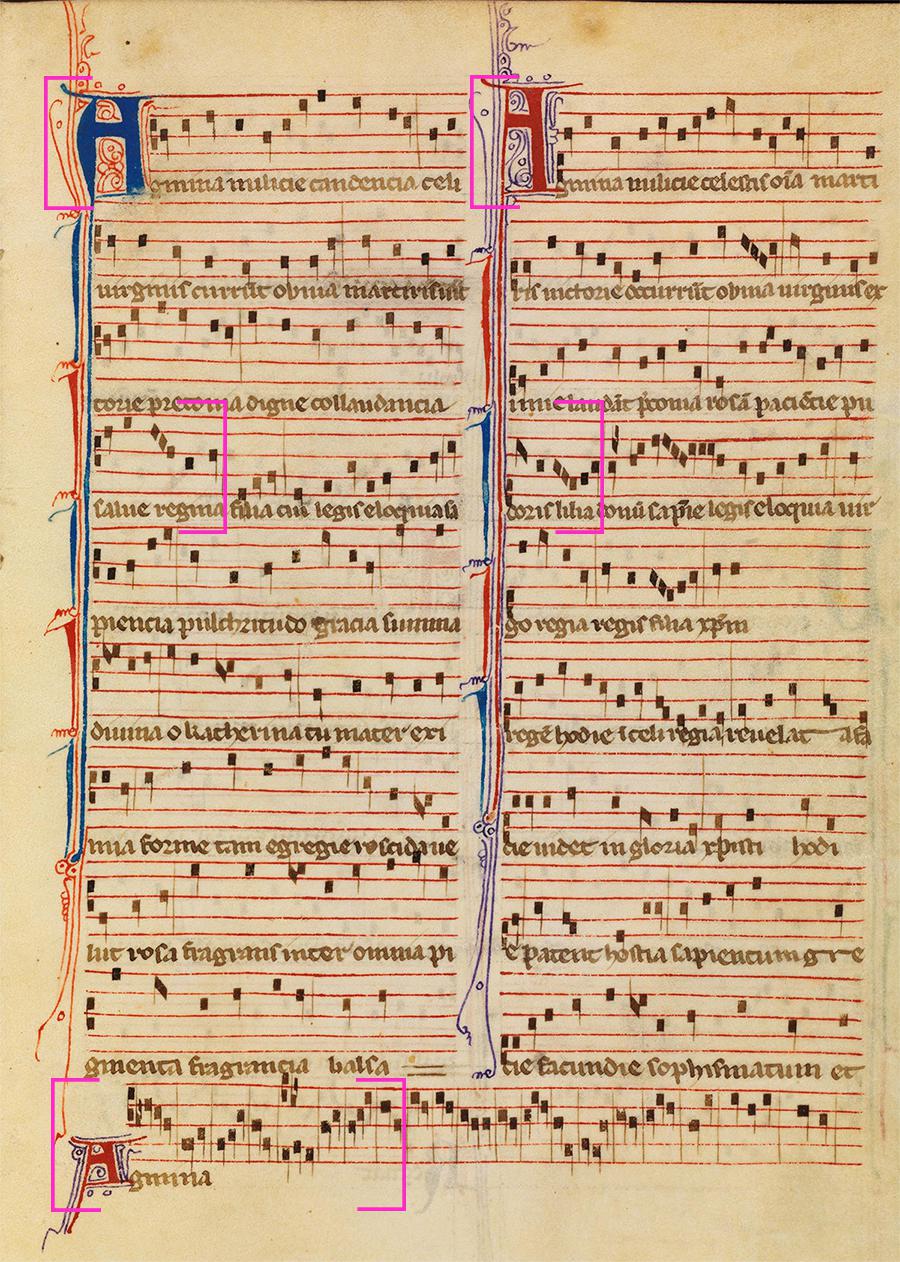EARLY MENSURAL NOTATION
4.13
Make your own transcription
In the last chapters you explored different concepts of how to note down music. You discovered how delicate the translation into modern notation is, that expresses certain aspects more precisely whilst others get lost. With the following exercise, we invite you to enjoy all the strategies and deciphering skills that you have acquired during this course. Be proud of them, we do appreciate how demanding this is!
We invite you to transcribe excerpts of a medieval piece.
You can choose the two-voice clausula Latus est (modal notation)

Excerpt of the two-voice clausula Latus est from the manuscript Firenze, Biblioteca Mediceo-Laurenziana, Plut. 29.1, fol. 158r.
www.e-codices.unifr.ch
Click to expand
or the three-voice motet Agmina milicie (Franconian Notation)

Excerpt of the three-voice motet Agmina milicie from the Codex Bamberg Staatsbibliothek, Lit. 115, f. 4r.
http://www.e-codices.unifr.ch
Click to expand
Of course, you are free to make transcriptions of both pieces, if you wish to do so.
In case you don’t have sheets of music at hand you can find an empty sheet of music In the ‘downloads’ section below.
Don’t forget to put an incipit at the beginning of your transcription and establish the range of the voices. In case you find this too difficult, you can take a look at the solution for this crucial first step here.
This is quite a challenging task, so don’t resign too quickly if you are experiencing some difficulties. Finally, you can compare your transcription with the solution that you also find in the ‘downloads’ section below.
License
Copyright: University of Basel
Téléchargements
